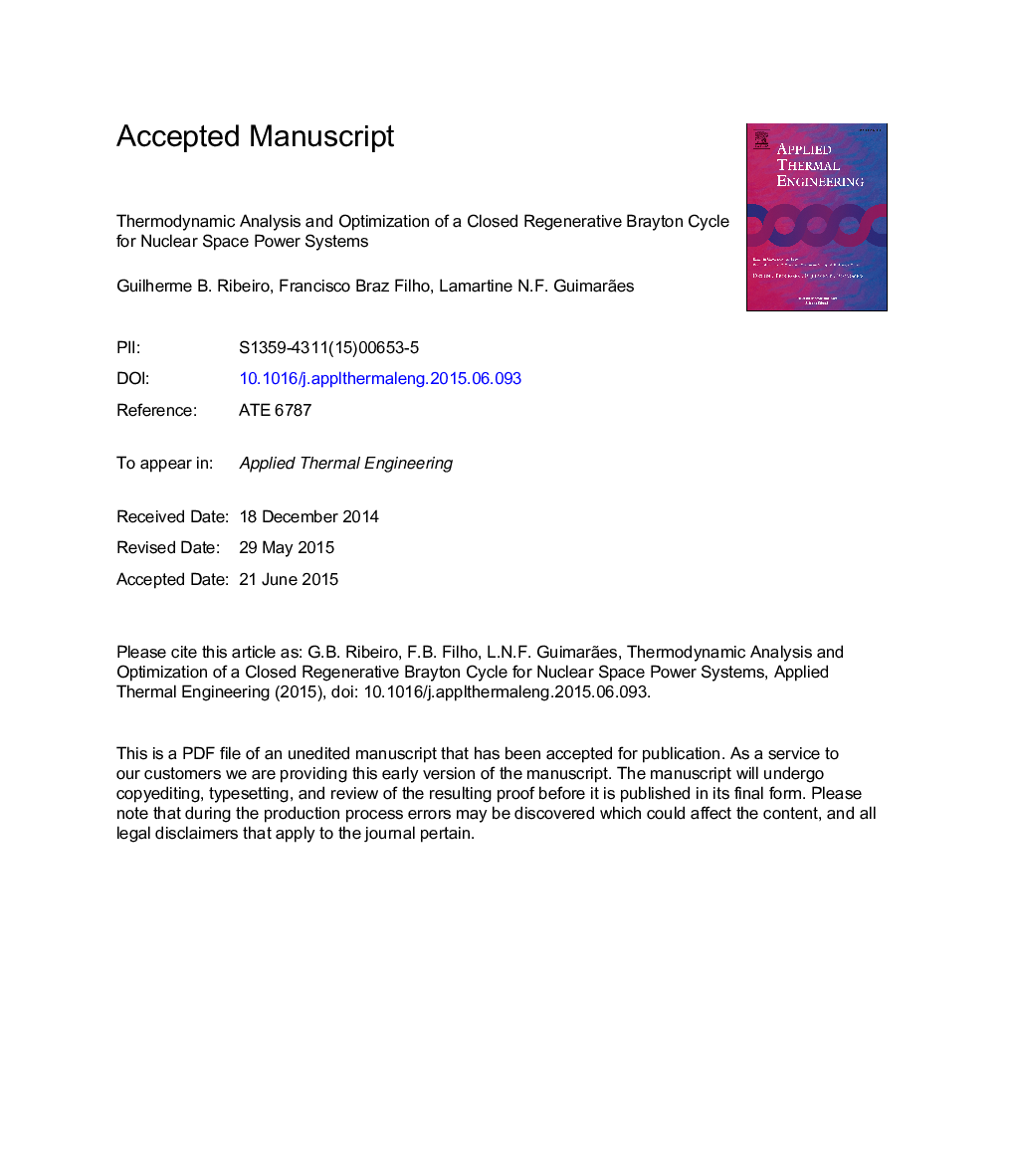| Article ID | Journal | Published Year | Pages | File Type |
|---|---|---|---|---|
| 7048832 | Applied Thermal Engineering | 2015 | 21 Pages |
Abstract
Nuclear power systems turned to space electric propulsion differ strongly from usual ground-based power systems regarding the importance of overall size and mass. For propulsion power systems, size and mass are essential drivers that should be minimized during conception processes. Considering this aspect, this paper aims the development of a design-based model of a Closed Regenerative Brayton Cycle that applies the thermal conductance of the main components in order to predict the energy conversion performance, allowing its use as a preliminary tool for heat exchanger and radiator panel sizing. The centrifugal-flow turbine and compressor characterizations were achieved using algebraic equations from literature data. A binary mixture of Helium-Xenon with molecular weight of 40Â g/mole is applied and the impact of the components sizing in the energy efficiency is evaluated in this paper, including the radiator panel area. Moreover, an optimization analysis based on the final mass of heat the exchangers is performed.
Related Topics
Physical Sciences and Engineering
Chemical Engineering
Fluid Flow and Transfer Processes
Authors
Guilherme B. Ribeiro, Francisco A. Braz Filho, Lamartine N.F. Guimarães,
